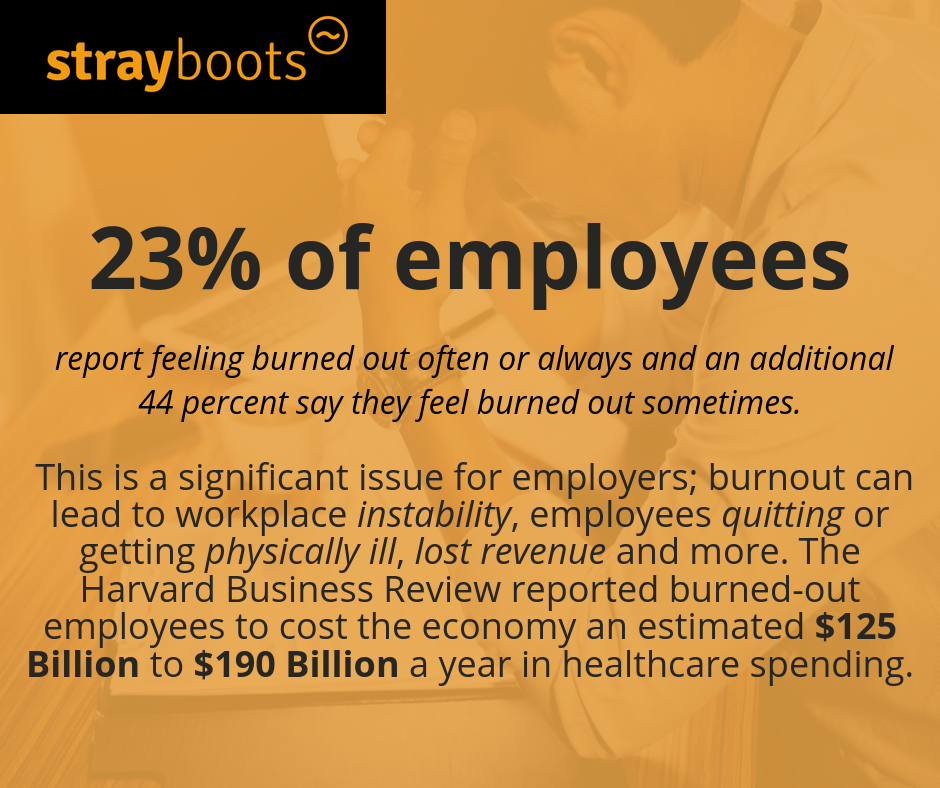What the ‘Burnout Generation’ means for the future of work
Burnout, especially among millennials, has been a hot topic for a while and was center stage in a recent essay from Buzzfeed’s Anne Petersen that went viral. For those who missed the essay, Petersen discusses her and her peers’ relationship with burnout. As she reports, Millennials are one of the first American generations who are drastically poorer than their parents as a result of student debt obligations, rapidly rising housing costs, and stagnant wages. Petersen argues these issues, among other things, have created a generation-wide feeling of burnout as well as hopelessness. A central part of her argument is the disconnect between what Millennials were raised to believe and the fact that there is little hope for most to “compete” their way out of the many structural problems facing society today.
The Cost of Burned-out Employees
Author Malcolm Harris agrees in his book Kids These Days: Human Capital and the Making of Millennials. Harris argues that Millennials, more than any other generation before them, have been primed from birth to be “employable,” both inside the classroom as well as elsewhere. Theirs, he argues, is the first generation trained almost solely to be the most productive worker possible. But when that employment does not materialize, or it is unstable, unrewarding or simply does not make ends meet, the disconnect can be profound. Some have even suggested millennial burnout might be, along with the recent bouts of political instability across the western world, the signal of the end of an order.
Reactions to these and similar works have been varied, but one thing everyone can agree on: the issue of Millennial burnout has touched a nerve, and no one likes to contemplate the end of the world order.
But it should be noted that Millennials are not the only workers suffering burnout. It can happen to workers of all ages, and instances of burnout have been on the rise over the last few decades. According to Gallup, 23 percent of employees report feeling burned out often or always and an additional 44 percent say they feel burned out sometimes. This is a significant issue for employers; burnout can lead to workplace instability, employees quitting or getting physically ill, lost revenue, and more. The Harvard Business Review reported burned-out employees cost the economy an estimated $125 Billion to $190 Billion a year in healthcare spending.

What can employers do? Working to spot the signs of burnout before it is too late is of course important. There are several common symptoms associated with burnout: anxiety, depression, insomnia, weakened immunities, loss of appetite, and substance abuse. All of these can reveal themselves in various ways in the workplace, and there are many organizations helping employers identify and deal with these issues (World Health Organization, for example, provides guidance). Additionally, here are general tips that are well-known but worth repeating:
Tips for Avoiding Employee Burnout
- Offer PTO and make ‘em use it. This may sound strange, but many workers who have paid time off don’t even take it. U.S. workers are notorious for not using their days off and the U.S. remains one of the least developed nations that does not set minimum requirements for time off (note: the global standard is 20 days). PTO is recognized as almost an essential element of a healthy work-life balance. Companies that don’t offer PTO can face serious retention issues, especially as the unemployment rate remains at a historic low. However, it’s not enough for companies to offer PTO. Many employees feel pressure to not take vacations, which can easily lead to burnout. Foster a culture in your company where taking a vacation is encouraged. Everyone needs time away, and the results of taking a break can often be enhanced productivity, thereby benefiting the employer.
- Kill the after-work emails. We’re more connected than ever which can be great for business. However, with this new level of connection, it is especially important to respect boundaries. Countries are beginning to pass laws cracking down on the practice of requiring employees to check messages during off hours; being overly connected has been shown to cause health problems like burnout and excessive stress. Respecting employees’ personal time (and encouraging them to respect it as well) will ensure your workforce develops a healthy work-life balance.
- Understand the role that pays and job stability play. Lack of job security, stability, and stagnant wages are contributing to burnout. Employers who may believe they are saving money or boosting shareholder value by keeping wages low may be negatively impacting their bottom line in the long run. Fair pay makes workers feel valued and increases loyalty to your company as well as reduces the necessity for side hustles which can exhaust your workers and make them less productive overall.
- Listen to your employees. It’s important to listen to what your employees are saying and how they are feeling. If they are feeling stressed or overwhelmed, understand what organizational factors may be contributing to these issues, and work to address problems.
One feeling commonly reported in conjunction with burnout is a worker’s lack of control over their destiny and an inability to self-determine their happiness. Here is an area where employers can help. From making sure employees have the tools they need to do their jobs well to providing volunteering activities, team building, and more, companies can do a lot to influence the happiness of their teams and thus, help to combat burnout.



